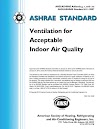“Drawdown” refers to the amount of useable water that can be drawn from a hydropneumatics tank from the time the pressure switch cuts out, turning off the pump, until the pressure switch cut back in, turning the pump back on. The amount of drawdown capacity is determined by a formula known as Boyle’s Law. Simply put, Boyle’s Law states as the volume of the air cushion in a tank decreases, the pressure of that air cushion increases. Conversely, as the volume of the air cushion increases, the pressure of that air decreases. Therefore, for any given tank, drawdown equals the volume of air at cut-in minus the volume of air at cut-out. Stated as a mathematical formula, taking into consideration the total volume of a pressure tank, it looks like this:
P1 is the pre-charge pressure.
P2 is the cut-in pressure.
P3 is the cut-out pressure.
V is the total tank volume.
Remember that all pressures must be stated in terms of absolute pressure. At sea level, add 14.7 psi to the gauge pressure to get absolute pressure. To make the calculations easier, Boyle’s Law can be restated as:
Drawdown = (P1 / P2 – P1 / P3) x V
Let’s try a couple of examples.
Example 1
30/50 pressure switch.
P1, the pre-charge pressure, is 28 psi.
P2, the cut-in pressure, is 30 psi.
P3, the cut-out pressure, is 50 psi.
V, the total tank volume, is 85 gallons.
Altitude is sea level.
The drawdown formula then looks like this:
Drawdown = (28 + 14.7) divided by (30 + 14.7) minus (28 + 14.7) divided by
(50 + 14.7) times 85. Or, (42.7 / 44.7) – (42.7 / 64.7) x 85
Therefore, drawdown = 0.295 x 85 = 25.1 gallons.
Example 2
Use the same tank conditions, but put the job up at Lake Tahoe in California at 6,000 feet above sea level, where the atmospheric pressure is 11.8 psi, instead of 14.7 psi.
This time, drawdown = (28 + 11.8) / (30 + 11.8) – (28 + 11.8) / (50 + 11.8) x 85
Now, drawdown = 0.307 x 85 = 26.1 gallons.
Example 3
Imagine a 30/50 pressure switch, but no pre-charge, as could be the case with a conventional tank with no pre-charge.
Drawdown = (0 + 14.7) / (30 + 14.7) – (0 + 14.7) / (50 + 14.7) x 85
Drawdown = 0.102 x 85 = 8.7 gallons, about 10 percent of the total tank capacity. As we will point out later, it is possible – though not always standard practice – to pre-charge conventional tanks.
Example 4
Instead of a 30/50 pressure switch, use a 40/60 pressure switch with a 38-psi pre-charge, and the numbers look like this:
Drawdown = (38 + 14.7) divided by (40 + 14.7) minus (38 + 14.7) divided by (60 + 14.7) x 85.
Therefore drawdown = 25.8 x 85 = 21.9 gallons.
Example 5
Consider how the drawdown changes if we widened the differential between the cut-in and cut-out pressures from 30/50 to 30/60.
Drawdown = (28 + 14.7) / (30 + 14.7) – (28 + 14.7) / (60 + 14.7) x 85
Drawdown = 38.4 x 85 = 32.6 gallons.
Compare this with the 25.1 from Example 1. A word of caution: Before expanding the cut-in/cut-out differential beyond 20 psi, check with your tank manufacturer to make sure that by doing so, you will not be over-expanding the water chamber.
Another term used in determining drawdown is “acceptance factor.” This simply is the factor by which you multiply the total tank volume to get drawdown.
In other words, drawdown = acceptance factor x total tank volume.
If you would rather work with acceptance factors, take the “V” out of the Boyle’s Law formula, and it becomes: Acceptance factor = P1/ P2 – P1/ P3.
Taking it one step further, if you consider the pre-charge to be the same as the pump cut-in pressure, P1/ P2 becomes 1, and the formula then is: Acceptance factor = 1 - P1/ P3.
However, as pointed out in earlier articles, the pre-charge must be set a minimum of 2 psi below the pump cut-in pressure to avoid the possibility of having the system pressure drop abruptly to zero before the pump turns on. It is imperative in a captive-air tank to have the pre-charge set at least 2 psi below the pump cut-in pressure. I strongly recommend using the proper version of Boyle’s Law, which includes a separate factor for pre-charge in order to accurately represent the drawdown of your system. And remember always to work in terms of absolute pressure in your Boyle’s law calculations by adding atmospheric pressure (14.7 at sea level) to the gauge pressure.







0 Comments